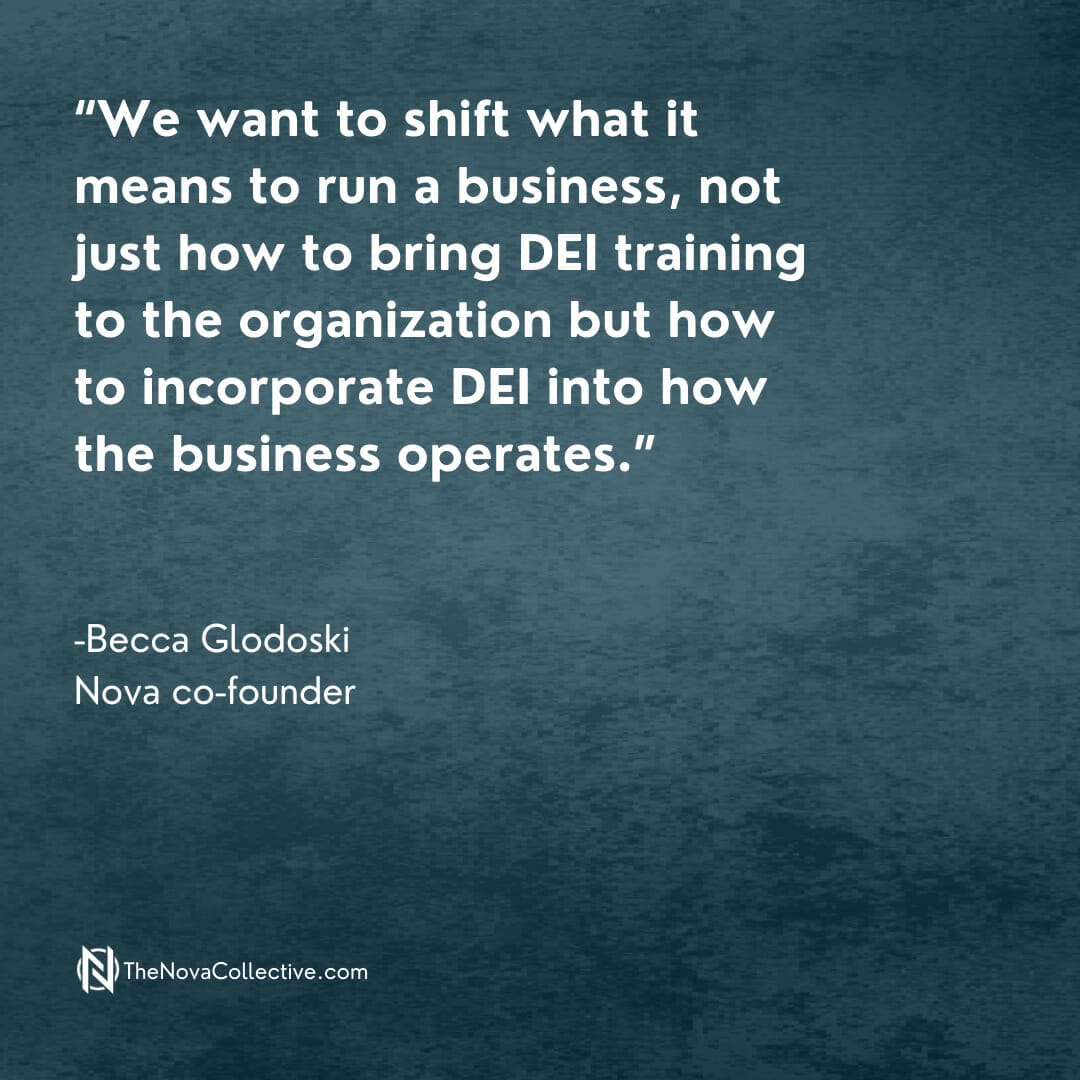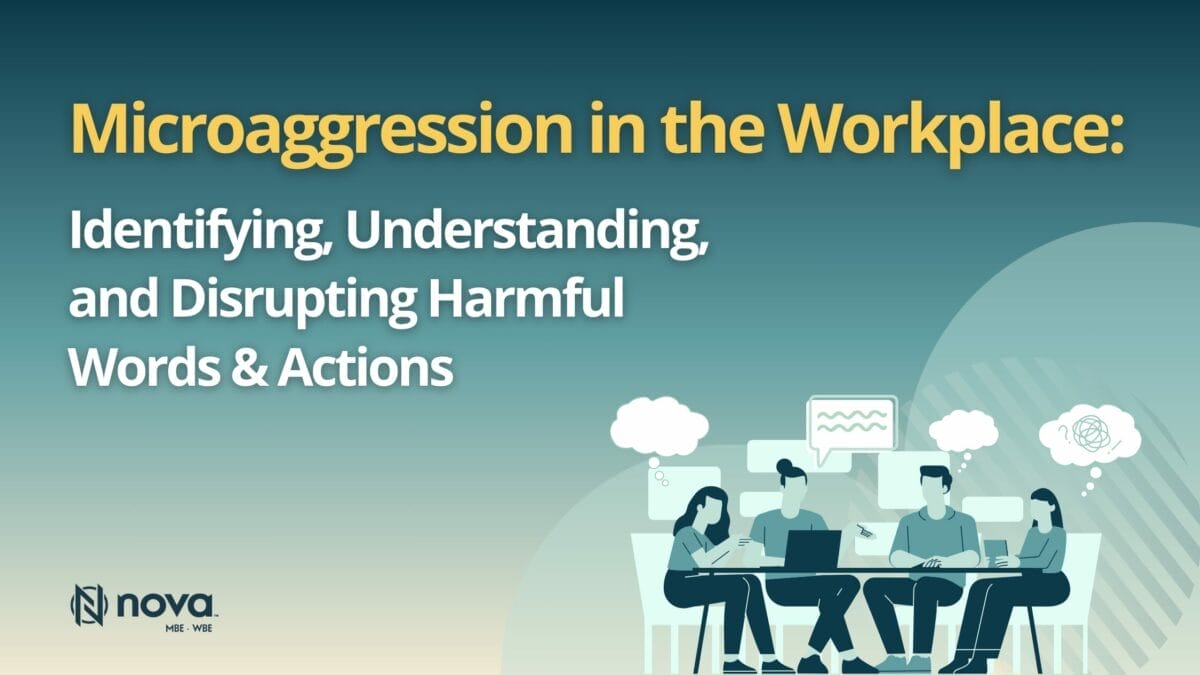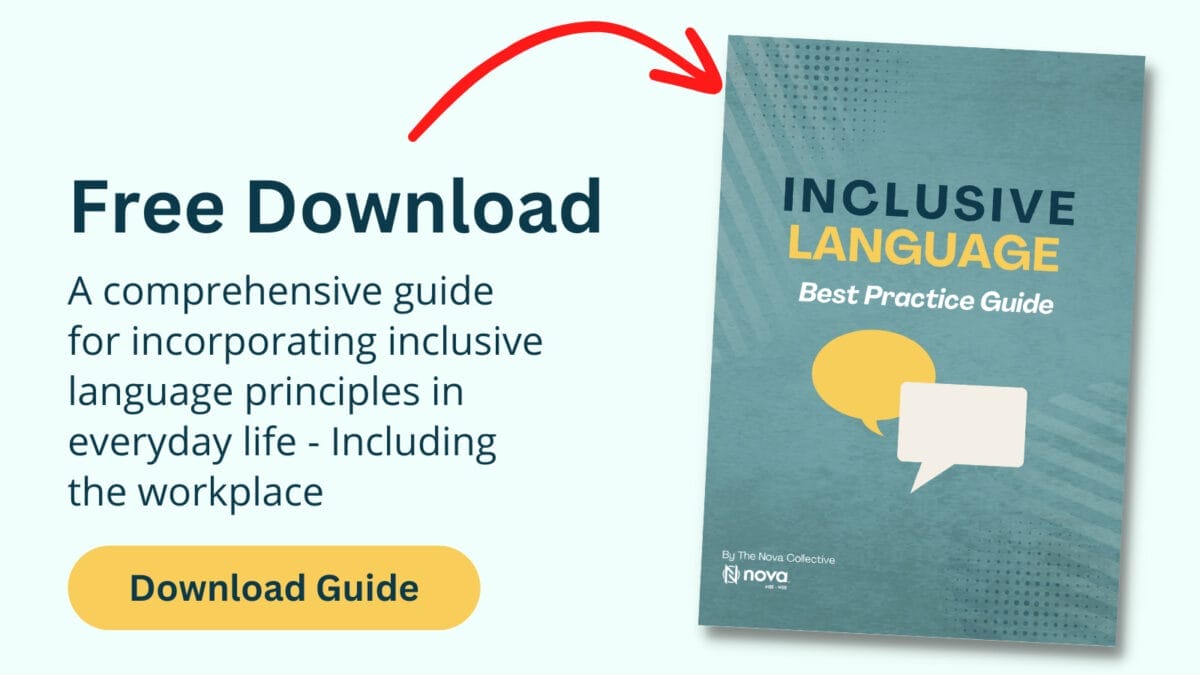Microaggressions often come up in Diversity, Equity, Inclusion and Belonging (DEIB) conversations - and for good reason. Microaggressions are something that can be said or done that insults marginalized people. It can be a form of unintended discrimination and is often delivered under the guise of a compliment. While it may be intentional, unintentional, or unconscious behavior, it has the same effect as conscious discrimination on those who are impacted by it. Some people’s social identities (such as their race, ethnicity, or religion) make them more likely to experience microaggressions on a regular basis. Because of their significant impact, microaggressions are formidable obstacles in cultivating a genuinely inclusive work environment, and can cause true harm to team member's well being and mental health. It is crucial to understand what microaggressions are, and how they influence the workplace so that we can take strategic steps to disrupt them.
Identifying Microaggressions:
Microaggressions show up in many contexts and forms, each with a range of circumstances and degrees of impact. Individuals and organizations can actively work toward creating an atmosphere of dignity and understanding by doing their part to understand the impact of their actions, and how to adapt their behavior. Here are some nuanced examples of microaggressions:
Microinsults:
Verbal and nonverbal communications that subtly convey rudeness or insensitivity, or undermine someone’s accomplishments/status based on a person’s marginalized identity, such as:
- “How did you get your job?”
- “You don’t seem gay.”
- “You are so articulate.”
Microinvalidations:
Communication that subtly excludes or negates the thoughts, feelings, or experiences of marginalized groups. These can be especially harmful as they imply that the person is overly sensitive or that their concerns lack validity. Examples include:
- “I don’t see color.”
- Always asking women to take notes in meetings
Microassaults:
These are conscious and intentional actions and slurs or jokes. While these may be more overt, they can often be missed depending on who is in the room; the social identity and privilege of the majority or those in leadership roles. These include:
- Abusive language
- Clutching or moving a purse or bag when around certain people
- Posting offensive signs or pictures intentionally
While the individuals responsible for these forms of microaggressions may not intend to be overtly harmful, the cumulative impact on the targeted person or group can be significant, leading to feelings of alienation, stress, and deterioration of emotional and physical health. Understanding the different ways microaggressions can show up is the first step toward cultivating an environment where every employee feels seen, respected, and valued.
How Microaggressions Show Up in the Workplace
At work, microaggressions can manifest in various subtle ways, creating an environment that may not be overtly hostile but still detrimental to the well-being, psychological safety, and professional growth of individuals. Recognizing how these microaggressions materialize allows an understanding of the effects and impact of our actions and each individual's role in cultivating an inclusive workplace culture.
Unequal Recognition and Opportunities:
Consistently overlooking the achievements of certain individuals based on their race or ethnicity, or failing to provide them equitable advancement opportunities, sends a message of exclusion and reinforces stereotypes.
Stereotyping and Assumptions:
Stereotyping and making assumptions based on an individual's race, culture, ethnicity, gender, age, or any other identities are pervasive forms of microaggressions in the workplace. These actions can undermine an individual's competence and contribute to a divisive atmosphere.
Microinsults in Communication:
Microinsults can infiltrate everyday communication, creating an environment where individuals may feel subtly demeaned or invalidated. Comments that unintentionally belittle someone's cultural practices, language proficiency, or appearance can contribute to a sense of alienation and diminish morale.
Exclusionary Practices:
Forming cliques or social groups that inadvertently exclude individuals based on identities like their race or gender can extend to professional networks, decision-making circles, or even informal social gatherings, limiting the opportunities for certain individuals to network and advance in their careers.
Colorblindness and Denial of Racism:
Adopting a “colorblind” approach or denying the existence of racial issues within the workplace can be a form of microaggression. These kinds of racial microaggressions dismiss the specific challenges faced by individuals from marginalized racial groups and hinders the creation of an inclusive environment that acknowledges and addresses these challenges.
Microinvalidations in Feedback:
In both performance evaluations and informal feedback, microinvalidations may appear as downplaying the significance of a person's experiences or attributing their successes to other team members. This can undermine the individual's confidence and hinder their professional growth.
Understanding how microaggressions manifest in the workplace sets a foundation for organizations to create an environment that promotes diversity, equity, and inclusion. By identifying these subtle behaviors and fostering a culture of awareness, compassion, and understanding, organizations can take proactive steps to address and rectify the harm of microaggressions.
Disrupting Microaggressions:
Disrupting microaggressions takes work and effort, even more so after harm has been inflicted. Repairing, healing, learning and actively making healthier choices is all part of the DEI journey. Here are a few key strategies to implement to address and disrupt microaggressions:
Cultivate Cultural Competence:
Cultivate a culture of curiosity, respect and understanding about different cultures, identities, and experiences. It's helpful to start with understanding our own unique identities and history to understand each individual's contribution to the diversity of any given community.
Inclusive Language Policies:
Develop and promote guidelines for the use of inclusive language within the organization. This includes avoiding gendered language, respecting pronouns, and refraining from assumptions based on stereotypes. Consider editing your organization's statements and policies through a DEI lens with trusted DEI experts.
Diversity in Leadership:
Actively work towards diverse representation in leadership positions. Leadership sets the tone for organizational culture, and diverse leadership can lead by example, creating an inclusive environment.
Continuous Training and Education:
Provide ongoing training on diversity, equity, and inclusion. Regular workshops and learning opportunities can reinforce awareness and empower employees to challenge and overcome their biases.
Check out Nova’s
Instructor-led Microlearnings
This tool was developed for people leaders who want to authentically lead DEI conversations with their teams. This program is designed to build additional capacity within people leaders, and help them develop trust with their teams around discussing DEI topics.
The format of these modules is flexible, providing leaders with the tools they need as a catalyst for nuanced conversations. The content is delivered as PowerPoint slides with Facilitator Guide notes, giving organizational leaders the option to adapt materials into the context that make the most sense for their teams.
Learn More About Nova’s Custom Toolkits
These 10-minute microlearnings are available on the following topics:
- Key DEI Terms
- Inclusion Starts with Us
- Helpful Phrases and Best Practices
- Do’s and Don’ts of Inclusion
- Inclusion Scenarios
- Trust
- Understanding Yourself
- Reflections & Commitments
Employee Resource Groups:
Establish employee resource groups that provide a platform for individuals to share experiences and insights. These groups can serve as valuable allies in the fight against microaggressions as well as provide a safe and brave space for those within these groups.
Feedback Mechanisms:
Implement anonymous feedback mechanisms where employees can report instances of microaggressions without fear of retaliation. This not only provides a safe space for expression but also helps organizations address specific issues.
Addressing and disrupting microaggressions is a multifaceted journey that demands commitment and persistence. By broadening our understanding of the subtleties involved, implementing targeted strategies, and fostering a culture of continuous learning and inclusivity, organizations can build a workplace that not only celebrates diversity but actively works to eradicate the harmful impact of microaggressions, allowing individuals of all identities and backgrounds to excel and find joy at work. The evolution towards a truly inclusive environment requires collective effort, but the impact of employee well-being, engagement, and innovation are worth the work.

Where are you on your DEI Journey?
We're here to support you, let's talk!


